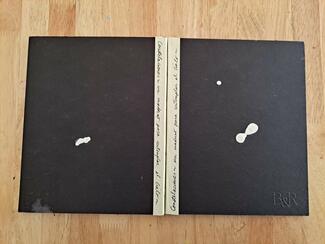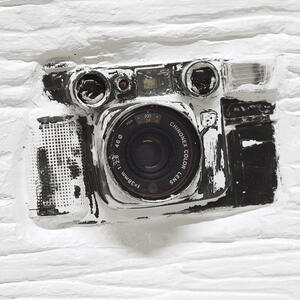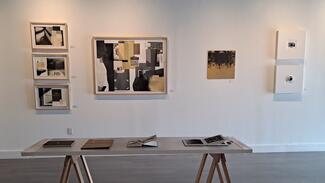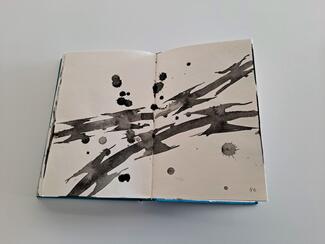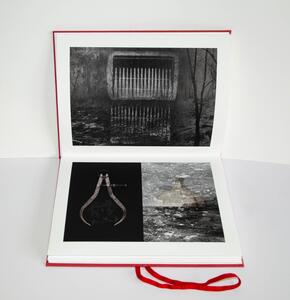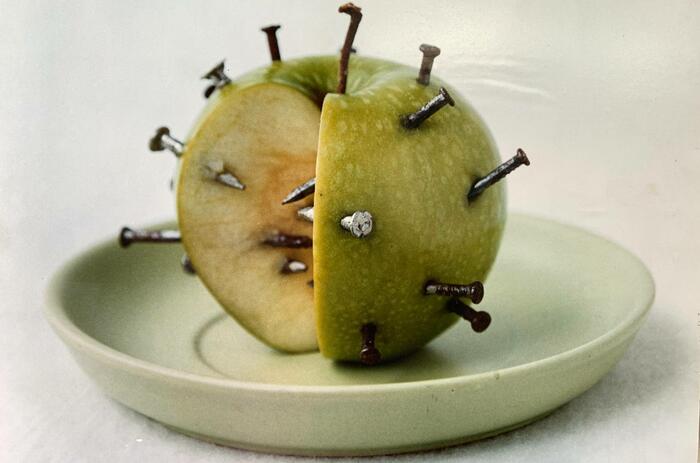25 ARTISTS WHO OPPOSED THEIR IMAGINATION TO CONFINEMENT IN 2020
An ancient oriental tale tells, with multiple variants, the story of a painter who, having been imprisoned by an arbitrary power, devoted himself to painting a detailed landscape on the prison walls. Day after day the jailers observed the futility of his efforts. But the night he finished it, while everyone was sleeping, the imprisoned artist entered the landscape and was lost in it. Another version says that he painted a door through which he escaped along with other inmates. Spaced Out: Time is Art, curated by Adriana Herrera at the Art Factory Project gallery, brings together a group of paintings, photographs, collages, sculptures and other three-dimensional works created during the pandemic by 21 artists of various nationalities ad based in Miami. The dialogue between multiple visions that configure different exit doors reaffirms the possibility of contrasting the freedom of artistic imagination with the oppressive atmosphere of the present.
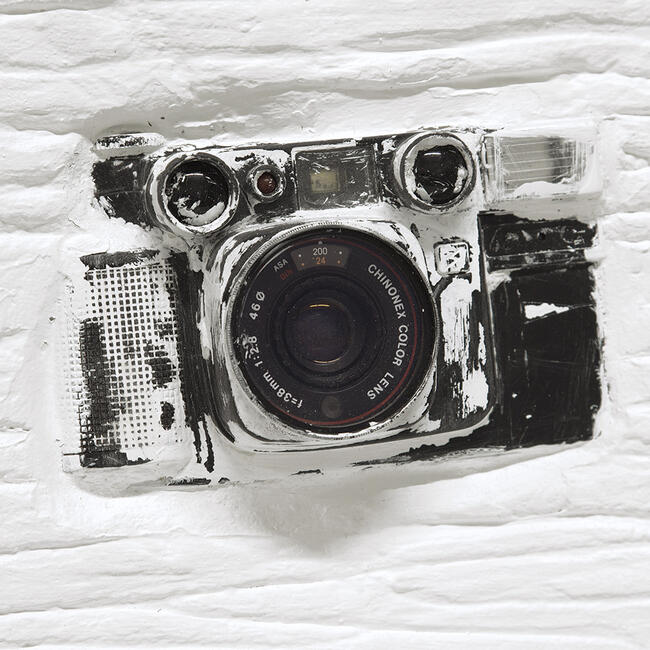
Artists: Paul Amundaraín, Willy Castellanos, Jorge Cavelier, Liliam Cuenca, Marina Font, Daniel Fiorda, Fernanda Frangetto, Leslie Gabaldón, Pilar Geada, Adler Guerrier, Juan Raúl Hoyos, Mira Lehr, Verónica Murphy, Ignacio Muv, César Rey, Eduardo Rezende , Yolanda Sánchez, Baruj Salinas, Sebastian Spreng, Carolina Spichiger and Rainy Silvestre. Four guests who live in different cities throughout America also participate: Silvia Cordero (Santiago de Chile), Gladys Triana (New York), Ronald Morán (San Salvador) and Viviana Zargón (Buenos Aires).
Much of the collected works reiterate creative models and cultural visions that specifically respond to the period after the outbreak of the pandemic. “Artistic creation is itself a way of allowing time for the tasks of the imagination and, for those who live and work in isolated studios, the restrictions reaffirmed their dedication to creation. But it is no less true that numerous works arose or were reoriented towards modes of reflection and transformative response to the challenges of the present,” says Herrera. Created in isolation, she highlights in the works “the coincidence in the perception of the fragility of the definitions of urban space, as well as a reaffirmation of our own subjective and sensitive presence, through modes of gestures; and a renewed awareness of the urgency of looking towards those other kingdoms inhabited by animal or plant species that our voracity and our speed have been dislodging ”.
The central room of the Art Factory Project brings together works that address the experience of living in conditions of siege or confinement: the Colombian Juan Raúl Hoyos reflects in his series Arquitecturas para no quedarse, 2020, “a vision of public space that is now not so public”, and the transformation of the ways of conceiving the private. The Brazilian Eduardo Rezende created photographic collages with exteriors of buildings in various cities around the world and vast landscapes of lands, seas or skies from other distant places. The same section brings together a sample of drawings by the Cuban-American artist Gladys Triana, and a painting by the Brazilian Fernanda Frangetto, works of exquisite sensitivity with a liberating function from within the being. In parallel, a series of predominantly monochromatic works constitute modes of "archeology" of cultural memory. This is the case with the work Canto XX, from the Dresden Series, 2018, by the Argentine artist Sebastian Spreng, a digital intervention of a photographic archive of this city that burned during the Second World War. Daniel Fiorda, also Argentine, created in his series New Mandalas, 2020, the fiction of archeologies of biological forms that evoke disappeared forms of life and face the very consciousness of extinction. The symbolic archeologies of the Venezuelan Paul Amundaraín and the Argentine Marina Font refer to their creative processes and mark turning points in their works. Multiple realities (Relative), 2020, of the first, contains the sediment of the influences of kinetic art in Venezuela, his country of origin, in friction with representations of action painting and Miami street art. Shifted Narratives, 2020, by Font, arises as an appropriation, deconstruction and intervention not only of the images of an already half-empty photographic album, inherited from her grandmother, but also of the material format of the old photo filing cabinet. The artistic intervention in what has been erased makes the lost shine again with the poetics of the return. In Raíces II, 2020, by the Argentine Verónica Murphy, the forms flow back to that ancestral memory of the land of the south, as a call to return to "wild" nature. In the work of the Colombian Jorge Cavelier, Golden Air Forests, 2020, the profile of successively cut groves brings us back the vision ─opposed to Western greed─ of the precious value of the plant kingdoms that preceded us in millions of years.
The works of the American Mira Lehr and the Haitian-born artist Adler Guerrier, installed in a small room dedicated to abstract paintings and graphic works, also contain a kind of appeal that goes beyond personal and historical memory: they are an evocation of the astonishment and also of the limitation of homo sapiens before the wonder of that little "blue point" of the universe in which we live. The Colombian César Rey in turn creates three-dimensional mobiles that, being abstract, maintain an organicity that recalls neo-concretism and its legacy of creatures that sensitize us.
In the entire work of the Cuban-American artist Baruj Salinas there is a recreation of the very matter of the universe, as he uses painting to form cosmogony, visual accounts of origin, mixing in a very personal way the legacy of abstract expressionism and informalism with textual signs. Streams, 2020, by Cuban-American artist Liliam Cuenca responds to the aesthetic notion of the sublime, which in a way is timeless. Blue Collection, 2020, by Chilean artist Carolina Spichiger arises from the balance between the hand that draws delicate lines and the irruption of the unexpected that shapes the spots that spread or overlap with the freedom of the game.
Constellations; notebook to contemplate the Sky (Vol. I & II), 2020, by also Chilean Ignacio Muv, is one of the three artist's books included in the exhibition and a subtle work of eschatological force. Brotes de Razón, 2020, by the Salvadoran artist Ronald Morán captures the visuality of the cloister, but, in the succession of its dizzying brush strokes, the representation of the barbed wire is invigorated to the point of configuring a poetic scenario that in the last pages unleashes a cosmic vision. In Corpus, 2021, Argentine artist Viviana Zargón superimposed public digital images, hers, her own photographic archive, messages received during the pandemic, and symbologies from multiple knowledge systems, to build an epistemological vision of this time.
Spaced Out: Time is Art also includes a project dedicated to walking around Miami and builds a kind of collective installation with the photographic works that Adler Guerrier himself, the Cuban-Americans Willy Castellanos and Rainy Silvestre, the Venezuelan Leslie Gabaldón, and the Spanish Pilar Geada, took during 2020, while they walked and observed the domains of plants and animals. Guerrier has for years taken direct photographs of creatures such as spiders -those builders of invisible geometries omnipresent in the area─ practicing in looking closely at other forms of life. “Arising from my need to escape, these photographs are mirrors of my own emotional landscapes,” Gabaldón writes about her series Mirages, 2020. Geada has repeatedly photographed nature with a penetrating eye. Silvestre found "the green" in the daily walks at dawn that he began to take during the strictest months of confinement. Impression No.1 / Sunrise with Mangroves, 2020, by Castellanos contains six photographs taken in the same place and from the same position in the period of time necessary to combine the changes of light at sunset with the variations of the diaphragm. In this room that documents nature, there is a non-photographic work: Criatura, 2020, by Chilean Silvia Cordero. It is a clay jug that culminates in the head of a little terrestrial animal. His tender presence brings to mind the famous words of Chief Seattle's Letter: "And what would mankind be without animals?" Pleasure Is a Measure of Freedom, 2021, by the Cuban-American artist Yolanda Sánchez is an abstract textile installation on layers of translucent fabrics in which the interplay between rhythm, color and light, which are central to the artist, appeals, as she herself affirms, to awaken our senses: "To feel more, see more and be more present: provoke an experience of enjoyment!"
The selection of all the works builds a collective body of vision in which we can not only feel the affirmation of our human presence, but also the call to reconnect, from forms of sensitivity, with our common memory, with the earth itself and with each other. As the curator Adriana Herrera affirms: "In the midst of all the confinements and spatial restrictions, the taking possession of time by art gives us back the experience that Octavio Paz described in his book Piedra de sol: The forgotten wonder of being alive."

